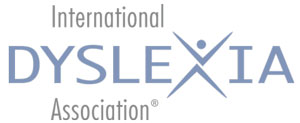Share This: 


Examiner, Volume 8, Issue 3
October 2018
By Molly Ness, PhD
 As advocated by professional organizations such as the International Dyslexia Association, International Literacy Association (2016), the National Center on Improving Literacy (2018), and the Learning Disabilities Association of America (2018), early prediction and identification of children with dyslexia is essential. As numerous states adopt legislation outlining plans for early screening and identification, we cannot afford to overlook our essential partners: pediatricians and other early childhood medical providers.
As advocated by professional organizations such as the International Dyslexia Association, International Literacy Association (2016), the National Center on Improving Literacy (2018), and the Learning Disabilities Association of America (2018), early prediction and identification of children with dyslexia is essential. As numerous states adopt legislation outlining plans for early screening and identification, we cannot afford to overlook our essential partners: pediatricians and other early childhood medical providers.
As numerous states adopt legislation outlining plans for early screening and identification, we cannot afford to overlook our essential partners: pediatricians and other early childhood medical providers.
A neurobiological learning disability that historically affects 10-15% of children (Cortiella & Horowitz, 2014; Shaywitz, 1998), dyslexia can no longer be confined to the purview of educators alone. A diagnosis of dyslexia may introduce a myriad of socioemotional, medical, and developmental challenges; children with dyslexia often face depression, anxiety, and anti-social and/or disruptive behavior (Mammarella et. al, 2016; Mugnaini, Lassi, La Malfa, & Albertini, 2009; Morgan, Farkas, Tufis, & Sperling, 2008; Vallas, 1999). Children with dyslexia have an increased risk for entering the juvenile justice system (Mallett, Stoddard-Dare, & Workman-Crewnshaw, 2011; Michaels, 2019); are less likely to complete high school or to pursue higher education (Dougherty, 2003; Jimrson, Egeland, Sroufe, & Carlson, 2000); and have lower average annual incomes, as adults, than children who are normally developing readers (McLaughlin, Speirs, & Shenassa, 2014; Ozernov-Palchik et. al, 2018). Furthermore, 25-40% of people with dyslexia have attention deficit hyperactivity disorder (ADHD) (Balsaz et al., 2014). Because of its associated risks and comorbidity, many stakeholders must contribute to the early identification of dyslexia, particularly primary care doctors in their yearly well-child check-ups.
The Role of the Pediatrician in Early Screening
With predictors of dyslexia detectable as early as age three (Gaab, 2017; Puolakanaho et al., 2007), we can no longer afford to wait for screenings to occur until children’s first formal schooling experiences. In a 2009 position paper negating visual deficiencies as the origin of dyslexia, the American Association of Pediatrics stated that “pediatrics should be vigilant in looking for early signs of evolving learning disabilities.” While pediatricians do not bear the responsibility or expertise for diagnosing dyslexia, they can and should perform basic literacy screenings as a routine part of well-child visits. In fact, many parents ask for information about reading development to be provided as a part of well-child visits. Results reported in Summary Statistics from the National Survey of Early Childhood Health, 2000 indicated that more than one-third of parents had not discussed reading with their pediatrician—but nearly half of that group believed such conversations would be useful.
While pediatricians do not bear the responsibility or expertise for diagnosing dyslexia, they can and should perform basic literacy screenings as a routine part of well-child visits.
Pediatricians have many developmental screenings, tests, and measurements to include in yearly checkups, and dyslexia screeners can also be included in time- and cost-effective ways. First, pediatricians can probe into family history about reading and/or academic difficulties, since dyslexia occurs in approximately 45% of children who have a first-degree relative with dyslexia (Snowling & Melby-Lervag, 2016). More specifically, pediatricians can probe (either through conversation with parent or direct observation of the child) for the following:
- Preschool
- Listening for signs of delays in speech development
- Is a child able to rhyme? (“What rhymes with /pig/?”)
- Can a child name letters?
- Kindergarten (all of the above, including the following):
- Can a child segment speech sounds within a word? (“What is the last sound that you hear and pronounce in mop?”)
- Can a child map letter sounds to letters i
- Can a child blend individual sounds together to pronounce a word? (“Can you push these sounds together into a word /k//ă//t/?)
- Does a child have difficulty with handwriting? (“Write your name on this paper.”)
- Probing for signs of frustration (e.g., avoiding reading, complaining that reading is too hard). (“What are your favorite books to read?” or “What do you like to read for fun?”)
- First Grade and Beyond (All of the above, and below)
- Does a child have difficulty with spelling? (“Spell /top/. Now spell /ship/?”)
- Can a child can read simple words of one syllable? (“Read this list of words:” map hit net bug. )
These screeners are intended to identify potential risk factors—not to identify, or diagnose, a reading disability. The pediatrician plays an important role in directing families to external experts (e.g., reading clinicians, speech and language pathologists [SLPs], school psychologists, etc.) who can gather additional data.
Of note, research and development are underway for at least two early literacy screening tablet-based apps:
- Dr. Nadine Gaab and the Boston Children’s Innovation & Digital Health Accelerator are working on an early literacy screening tablet-based app to be used at children’s four- and five-year check-ups: https://www.gse.harvard.edu/news/uk/18/11/theres-app.
- Dr. Fumiko Hoeft and researchers at UCSF Dyslexia Center, University of Connecticut, MIT, and Curious Learning are working on a gamified school readiness and literacy/dyslexia screener app developed for children of ages 3-8 called APPRISE—Application for Readiness in Schools and Learning Evaluation: http://www.APPRISEproject.org
Until such technology is readily available from other researchers, pediatricians can incorporate the aforementioned screeners as they are low cost or free, simple to add to the standard doctor-patient interaction, and do not require vast literacy knowledge.
Early screenings increase the likelihood of catching struggling readers “before they fall” (Torgesen, 1998). Currently, too many children are diagnosed with reading difficulties after grade three. Delayed diagnosis fails to optimize the critical period of birth to age eight—when the brain’s plasticity is most likely to respond to effective intervention (Nevills & Wolfe, 2009).
A Call to Action: Collaborative Effort Towards Preventing Reading Failure
For many of our children—particularly those in low-income areas—a visit to the pediatrician is the most important interaction with a professional who knows and recognizes the milestones in child development. Now more than ever, research and data from multiple professionals—educators, SLPs, physicians, neuroscientists, and psychologists—are shaping our understanding of dyslexia. Primary care physicians and pediatricians will certainly benefit from additional support and education, a recommendation provided in an American Academy of Pediatrics (AAP) (2014) paper stating that the AAP supports “training related to language and literacy development into pediatric resident education” (p. 407). The American Academy of Pediatrics—and individual pediatricians—must stand on the front line and join in the efforts to recognize the early signs of reading difficulties; proactive participation will surely lead to earlier diagnosis and remediation, catching our children before they are left to struggle in school and life.
For many of our children—particularly those in low-income areas—a visit to the pediatrician is the most important interaction with a professional who knows and recognizes the milestones in child development.
References
American Academy of Pediatrics (2009). Learning disabilities, dyslexia, and vision. American Academy of Pediatrics, Section on Ophthalmology, Council on Children with Disabilities, American Academy of Ophthalmology, American Association for Pediatric Ophthalmology and Strabismus and American Association of Certified Orthoptists, Pediatrics 2009.
American Academy of Pediatrics (2014). Literacy promotion: An essential component of primary care pediatric practice. Pediatrics, 134(2), 404–409.
Balasz, J., Miklosi, M., Kereszteny, Z., Dallos, G., & Gadoros, J. (2014). Attention-deficit hyperactivity disorder and suicidality in a treatment naïve sample of children and adolescents. Journal of Affective Disorders, 133(3), 595–9.
Cortiella, C., & Horowitz, S. H. (2014). The state of learning disabilities: Facts, trends and emerging Issues. National Center for Learning Disabilities, 1–52.
Dougherty, C. (2003). Numeracy, literacy, and earning: Evidence from the National Longitudinal Survey of Youth. Economics of Education Review, 22, 511–521.
Gaab, N. (2017). It’s a myth that young children cannot be screened for dyslexia! International Dyslexia Association. https://dyslexiaida.wpengine.com/its-a-myth-that- young-children-cannot-be-screened-for-dyslexia/
Halfon, N., Olson, L. Inkelas, M., et al. (2002) Summary statistics from the National Survey of Early Childhood Health, 2000. National Center for Health Statistics. Vital and Health Statistics, 15(3). 2002.
International Literacy Association. (2016). Dyslexia: A response to the International Dyslexia Association [Research Advisory Addendum]. Newark, DE: Author.
Jimrson, S., Egeland, B., Sroufe, A., & Carlson, B. (2000). A prospective longitudinal study of high school dropouts: Examining multiple predictors across development. Journal of School Psychology, 38(6), 525–549.
Mallett, C. A., Stoddard-Dare, P., & Workman-Crewnshaw, L. (2011). Special education disabilities and juvenile delinquency: A unique challenge for school social work. School Social Work Journal, 36(1), 26–40.
Mammarella, I., Ghisi, M., Bomba, M., Bottesi, G., Caviola, S., Broggi, F., & Nacinovich, R. (2016). Anxiety and depression in children with nonverbal learning disabilities, reading disabilities, or typical development. Journal of Learning Disabilities, 49(2), 130–139.
Mather, M. & Wendling, B. (2012). Essentials of dyslexia assessment and intervention. Hoboken, NJ: John Wiley & Sons.
Michaels, S. (2019). People in prison are way more likely to have dyslexia: The justice system sets them up to fail. Mother Jones.
Morgan, P.L., Farkas, G., Tufis, P.A., & Sperling, R.A. (2008). Are reading and behavior problems risk factors for each other? Journal of Learning Disabilities, 41(5), 417–436.
McLaughlin, M.J., Speirs, K. & Shenassa, E.D. (2014). Reading disability and adult attained education and income: Evidence from a 30-year longitudinal study of a population-based sample. Journal of Learning Disabilities, 47(4), 374–386.
Mugnaini, D., Lassi, S., La Malfa, G., & Albertini, G. (2009). Internalizing correlates of dyslexia. World Journal of Pediatrics (5) 255–264.
Nevills, P., & Wolfe, P. (2009). Building the reading brain, PreK–3 (2nd ed.). Thousand Oaks, CA: Corwin Press.
Ozernov-Palchik, O., Norton, E. S., Wang, Y., Beach, S. D., Zuk, J., Wolf, M., Gabrieli, J. D. E., & Gaab, N. The relationship between socioeconomic status and white matter microstructure in pre-reading children: A longitudinal investigation. Human Brain Mapping. (2018 Oct 1). doi: 10.1002/hbm.24407.
Puolakanaho, A., Ahonen, T., Aro, M., Eklund, K., Leppanen, P., Poikkeus, A., Tolvanen, A., Torppa, M., & Lyytinen, H. (2007). Very early phonological and language skills: Estimating individual risk of reading disability. Journal of Child Psychology and Psychiatry, 48, 923–931.
Petscher, Y., Fien, H., Stanley, C., Gearin, B., Gaab, N., Fletcher, J.M., & Johnson, E. (2019). Screening for Dyslexia. Retrieved from improvingliteracy.org
Snowling, M.J. & Melby-Lervag, M. (2016). Oral language deficits in familial dyslexia: A meta-analysis and review. Psychological Bulletin, 142(5), 498–545.
Torgesen, J. K. (1998). Catch them before they fall: Identification and assessment to prevent reading failure in young children. American Educator, 22, 32–39.
Valas, H. (1999). Students with learning disabilities and low-achieving students: Peer acceptance, loneliness, self-esteem, and depression. Social Psychology of Education, 3(3), 173–192.
Molly Ness, Ph.D., earned a doctorate in reading education from the University of Virginia. Since 2006, she has been a teacher educator and associate professor at Fordham University. She is the author of three books and multiple articles in peer-reviewed journals. Her research focuses on reading comprehension, teachers’ instructional decisions and beliefs, word study, and matching books to readers. In 2019, Molly began the End Book Deserts podcast to bring attention to the issue of book access and equity in high-poverty areas.
Copyright © 2019 International Dyslexia Association (IDA). Opinions expressed in The Examiner and/or via links do not necessarily reflect those of IDA.


